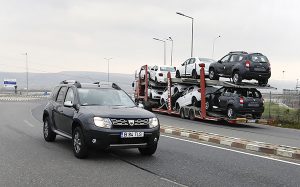The recent surge in gasoline prices suggests we might see a reversal in consumers’ years-long shift towards trucks or sports-utility vehicles (SUV) back to more modest, fuel-efficient vehicles. But don’t expect automakers to go along. We’re not likely to have an adequate supply of the basic gasoline-powered family sedan ever again, thanks to the transition to electric vehicles, continuing supply chain problems and an aging fleet. Americans will increasingly have to resort to the used-car market, where they’ll pay dearly for their preference.
We’ve been feeling some of that pain for the past two years as prices soared for used cars. Automakers haven’t been able to get the semiconductors they need to produce enough new vehicles to meet demand, which has pushed up prices in the used market.
But as those supply-chain issues slowly get sorted out, automakers have begun focusing on high-priced electric trucks and SUV’s, which they consider to be their future. There are already long pre-order waiting lists for pricey models like Ford’s F-150 Lightning and Rivian’s R1S and R1T. Tesla makes electric sedans, but after a price increase announced this week its cheapest model will be just under $47,000.
To the extent carmakers plan on ramping up production of gasoline-powered vehicles, it’s going to be mainly high-priced trucks and SUV’s, which are more profitable than sedans, and where there’s plenty of demand after two years of subdued production. Perhaps there’s a window where producing modest sedans could generate above-normal profits, but automakers remain supply-constrained and don’t think investors will reward them for such a pivot now that the industry is all-in on its electric vision. That’s a problem for consumers wanting to buy these kinds of vehicles given the aging of the fleet. While cars last longer than ever, they do eventually wear out, and automakers aren’t coming close to producing enough sedans to replace the ones at their end of life.
Assuming sedans last 15 years on average, a way to evaluate this is comparing the number of sedans produced today with the number produced 15 years ago. In 2007, that annual production number was a little more than 5 million a year, whereas today it’s closer to 2 million. In other words, the number of sedans on the road is falling by 3 million a year.
—Bloomberg
 The Gulf Time Newspaper One of the finest business newspapers in the UAE brought to you by our professional writers and editors.
The Gulf Time Newspaper One of the finest business newspapers in the UAE brought to you by our professional writers and editors.
